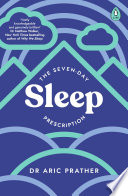

Stress and anxiety are significant barriers to quality sleep. The book introduces various mindfulness and relaxation techniques that can help calm the mind and prepare the body for sleep. Techniques such as deep breathing, progressive muscle relaxation, and guided imagery are discussed, along with their benefits for reducing stress and enhancing sleep onset. The author emphasizes the importance of establishing a calming bedtime routine that incorporates these practices, allowing readers to cultivate a peaceful mindset conducive to sleep.
Continue readingSleep is often undervalued in our fast-paced society. However, it is a fundamental pillar of health, cognitive function, and emotional well-being. The book emphasizes that sleep is not simply a passive state but an active process that rejuvenates the body and mind. The author discusses various studies showcasing how inadequate sleep can lead to numerous health issues, including obesity, diabetes, heart disease, and mental health disorders. The narrative stresses that prioritizing sleep is not a luxury but a necessity for optimal functioning. It sets the stage for understanding how the following strategies can enhance sleep quality and overall health.
Continue readingThe book delves into the science of sleep cycles, explaining the different stages of sleep, including REM (Rapid Eye Movement) and non-REM sleep. Each stage plays a crucial role in physical restoration, memory consolidation, and emotional regulation. The author introduces readers to the concept of sleep architecture and how disruptions in these cycles can lead to fragmented sleep and diminished restorative effects. By understanding these cycles, readers can better appreciate the importance of a consistent sleep schedule and how to align their sleep patterns with their natural circadian rhythms.
Continue readingA conducive sleep environment is paramount for achieving quality rest. The book provides practical tips on how to optimize one's bedroom for sleep, including controlling light, noise, and temperature. It discusses the importance of a comfortable mattress and pillows, as well as the benefits of decluttering the sleep space. The author also touches on the impact of technology and screens on sleep quality, advocating for a 'digital sunset' to help the brain wind down before bed. This section empowers readers to take actionable steps towards creating a sanctuary for sleep.
Continue readingNutrition plays a significant role in sleep quality, and this idea is explored in-depth in the book. The author discusses how certain foods and beverages can either promote restful sleep or disrupt it. For instance, heavy meals close to bedtime, caffeine, and alcohol can hinder sleep quality, while foods rich in magnesium, tryptophan, and melatonin can enhance it. The book provides practical dietary recommendations and meal timing strategies to help readers align their eating habits with their sleep goals. This connection between nutrition and sleep is crucial for holistic health.
Continue readingRegular physical activity is highlighted as a powerful tool for improving sleep quality. The book discusses how exercise can help regulate sleep patterns, reduce anxiety, and promote deeper sleep. However, the timing of exercise is crucial; engaging in vigorous workouts too close to bedtime can be counterproductive. The author provides guidelines on the best times to exercise and the types of activities that are most beneficial for sleep. This section encourages readers to incorporate movement into their daily routines as a means of enhancing their overall sleep health.
Continue readingThe final idea centers on the importance of establishing a consistent sleep routine. The book outlines the steps for developing a personalized sleep schedule that aligns with individual needs and lifestyles. The author stresses the value of going to bed and waking up at the same time each day, even on weekends, to reinforce the body’s internal clock. Additionally, it discusses the importance of listening to one’s body and making adjustments as necessary. This routine not only aids in falling asleep but also in achieving restorative sleep, leading to improved overall well-being.
Continue reading